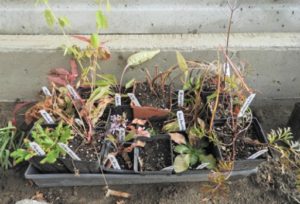Money Does Grow on Plants

To view the photo-rich magazine version, click here.
Originally appears in the Winter 2021 issue.
By Todd Beasley
Perceptions of K–12 school plant sales used to evoke images of straggly seedlings in dixie cups, plant divisions from neighborhood yards in a smorgasbord of randomly sized pots and containers, and ice-cream-stick plant labels complemented with homemade poster-board signs. In today’s reality, even schools in the beginning stages of a gardening program can readily produce quality specimens for a plant sale with a progressive setup mimicking a certified roadside farmers market.
With minimum profit margins of at least 80% from markup percentages as low as 200%, the payback from plant sales equates to a nice slush fund for future campus greening initiatives and student-led STEAM academic research projects. The number of schools incorporating horticulture programs into their curricula or as after-school programs is again on the rise after many of these programs were closed in the late 1980s and early 1990s due to budgetary challenges. As confirmed by The Greenhouse Company in Irmo, South Carolina (SC), many schools are beginning to retrofit older greenhouses into viable learning spaces after many years of neglect or use for random storage. Construction of new institutional and instructional greenhouses for education is also on the rise for the purpose of enhancing curricula by bringing lab experiences alive with real-world connections. Using a greenhouse as an integrating context for STEAM connections through either interdisciplinary or multidisciplinary models is once again successfully capturing the attention of teachers and students.
This content is restricted to subscribers only.
If you are not yet a subscriber, please consider taking out a subscription here.
If you are an existing subscriber, kindly log in or contact us at info@greenteacher.com for more information.





